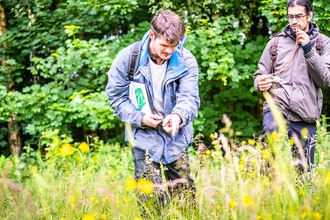There are around 40000 different species of spider
Spiders are found on every continent except Antarctica
All spiders spin silk, but not all spiders spin webs
Spiders eat more insects than birds and bats combined
When a spider travels, it always has four legs touching the ground and four legs off the ground at any given moment
The world’s smallest spider is the Patu marplesi. It is so small that 10 of them could fit on the end of a pencil
The world’s biggest spider is the goliath spider (Theraphosa blondi). It can grow up to 11 inches wide, and its fangs are up to one inch long. It hunts frogs, lizards, mice, and even small snakes and young birds
Arachnophobia is the fear of the spiders. It is one of the most common phobias in North America and Europe. Arachnophobia is less common in tropical places where there are more large, hairy spiders
Spider silk is amazingly lightweight: a strand of silk long enough to go all the way around the Earth would weigh less than 500 grams - that's the same as a bag of sugar! It's also as strong as Kevlar, the material used to make bulletproof vests.
The silk that comes out of the spider’s spinneret is liquid, but it hardens as soon as it comes in contact with air. Some spiders have up to seven types of silk glands, each creating a different type of silk—such as smooth, sticky, dry, or stretchy
Hundreds of years ago, people put spider webs on their wounds because they believed it would help stop the bleeding. Scientists now know that the silk contains vitamin K, which helps reduce bleeding
Mother spiders can lay as many as 3,000 eggs at one time. Baby spiders are called spiderlings. While most mother spiders do not stay with their babies, the wolf spiders carry their babies on their back
The Garden orb spider is the most recorded spider across Birmingham and the Black Country. Look for a greyish-brown spider with a white cross on its back, spinning its famous spiral webs.
Different drugs affect the way spiders spin their webs. For example, spiders on LSD spin beautiful webs, while spiders on caffeine spin terrible webs. Scientists believe that examining the shape of a spider’s web can also help detect airborne chemicals and pollutants
A spider has no bones. Rather, it has an exoskeleton, which is like a hard suit of armor that protects its body. Because an exoskeleton does not grow, a spider molts. Typically, a spider molts about 10 times throughout its life
A web is sticky because of glue droplets the spider deposits on it. These droplets are three times thinner than the diameter of a single hair. Scientists describe these droplets as being similar to chewing gum: they just keep stretching and stretching
With thanks to https://www.factretriever.com/ for additional facts



